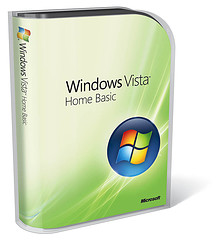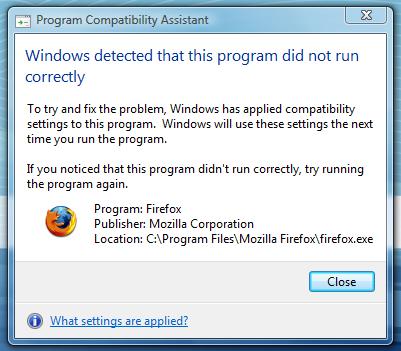It turns out someone does like Windows Vista, along with Office and the other stuff Microsoft sells.
– reports the New York Times, quoting Microsoft’s Kevin Johnson:
Customer demand for Windows Vista this quarter continued to build with double-digit growth in multi-year agreements by businesses and with the vast majority of consumers purchasing premium editions.
(emphasis mine)
…lot of folks spend so much time bitching about Vista and Office that they overlook one key point: Folks are buying this stuff.
– says Between the Lines. Donna Bogatin goes on in her “the-blogosphere-is-all-wrong-except-me” style:
The disconnect between tech blogosphere negative Microsoft hype and positive Microsoft reality continues to astound. Yesterday, Microsoft reported 27% revenue growth, fastest first quarter since 1999…
Typical Vista gloom and doom blogger headlines: “No one is lining up for Windows Vista in San Francisco,” “The top five things about Windows Vista that still suck,” “Is Windows XP too good for Microsoft’s own good?”…
If Vista were truly the nightmare it is made out to be in the blogosphere, wouldn’t there be a massive consumer Microsoft revolt?
Time for a reality check. Product quality, customer satisfaction and market success have very little to do with each other when you have a monopoly.
The Vista problems are real, they are not fantasies created by bloggers. But how exactly are consumers supposed to revolt? They still need computers, and despite Apple’s respectable growth, they still represent a fraction of the consumer PC market. Try to buy a PC today, it’s hard to NOT end up with Vista (even I got one)
Customer demand for Vista? No, it’s customer demand for computers, in a market with no choice. I’m not “making this up”, Donna. It’s all in Microsoft’s 10-Q:
…Client revenue growth correlates with the growth of purchases of PCs from OEMs that pre-install versions of Windows operating systems because the OEM channel accounts for approximately 80% of total Client revenue. The differences between unit growth rates and revenue growth rates from year to year are affected by changes in the mix of OEM Windows operating systems licensed with premium edition operating systems as a percentage of total …
The increased “demand” for premium versions comes from another well-documented fact, i.e. Microsoft’s new segmentation, castrating Vista Home Basic and essentially making Home Premium the equivalent of XP Home – a hidden price increase, by any measure.
A true measure of “demand” for Vista would be corporate licenses and retail sales, and both are behind. But not for long: eventually, after the release of SP1 corporate IT will give in, too – who wants to be “left behind”, after all.
This isn’t liking Vista at all – it’s assimilation by the Borg.
Related posts: Between the Lines, Insider Chatter, Seeking Alpha, All about Microsoft, Tom Foremski: IMHO, Silicon Valley Watcher, Mark Evans, Computerworld, Gaffney3.com, Seeking Alpha Software stocks, Todd Bishop’s Microsoft Blog, Alice Hill’s Real Tech News, Paul Mooney, Between the Lines , TechCrunch, All about Microsoft and Parislemon (who, like me, did not overdose of $Kool-aid$)
Update (1/11/08): A UK Government report advises school to avoid upgrading to Vista, or deploying Office 2007.
See further update here.


 BBSpot reports
BBSpot reports OK, so I bit the bullet: after
OK, so I bit the bullet: after  the two other USB ports on the side of the display).
the two other USB ports on the side of the display). I will spare you the details of my two-day struggle with Vista, the fight with the idiotic permission-scheme, (can’t delete my own stuff), the incompatibilities, the fact that there’s less and less information to be found, other than from users – hey, even the User Manuals link points to nowhere… enough said already. After two days, I can use the system (the screen is beautiful) but I’m far from done.
I will spare you the details of my two-day struggle with Vista, the fight with the idiotic permission-scheme, (can’t delete my own stuff), the incompatibilities, the fact that there’s less and less information to be found, other than from users – hey, even the User Manuals link points to nowhere… enough said already. After two days, I can use the system (the screen is beautiful) but I’m far from done.



Recent Comments